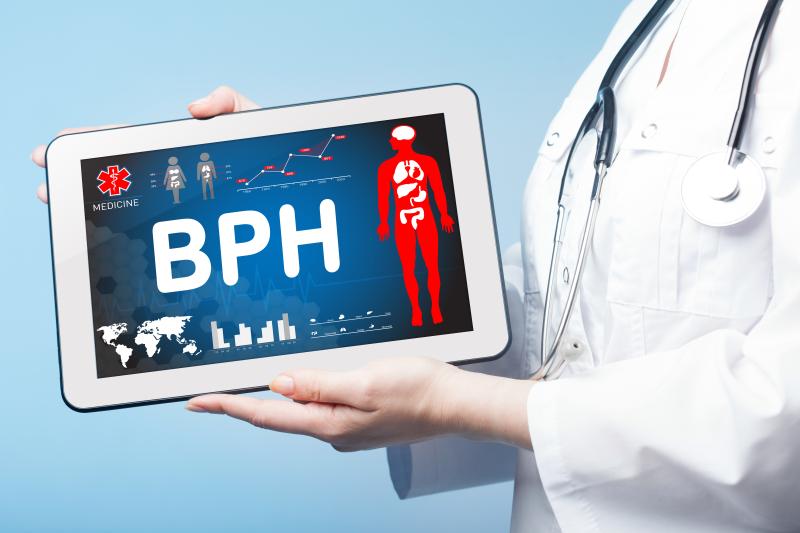
Aquablation performs as well as transurethral resection of prostate (TURP) in terms of safety and efficacy for treating benign prostatic hyperplasia (BPH)/lower urinary tract symptoms (LUTS), although the former is associated with a lower rate of retrograde ejaculation, according to the results of a systematic review.
“The water jet dissection is, today, one of the most promising techniques for the treatment of BPH/LUTS. It is a technique recently introduced in clinical practice that, thanks to the association of ‘real time’ imaging and the robotic automation of an adjustable high-speed jet of saline solution, allows a careful removal of the prostatic adenoma,” the authors said. [BJU Int 2016;117:923-929]
“Given its recent introduction into clinical practice, the European Association of Urology 2018 guidelines considered it an ‘under evaluation’ method, emphasizing how further clinical trials are needed to compare water jet dissection with other methods (TURP, laser therapy, simple prostatectomy),” they added.
The authors then conducted a systematic review of studies evaluating the main functional and sexual outcomes, as well as adverse effects of water jet dissection on the prostatic parenchyma performed by the Aquabeam system. The search yielded a total of nine studies involving 664 patients.
Data on the functional outcomes showed that aquablation produced improvements in all functional outcomes—International Prostate Symptoms Score (IPSS), maximum urine volume (Qmax), quality of life (QoL) and postvoiding residue (PVR)—which were not statistically inferior relative to those achieved with TURP. The results were similar in LUTS/BPH patients aged 45–80 years and those with prostate volume of 30–80 g. [Int J Impot Res 2019;31:392-399]
However, the mean resection time was shorter with the water jet dissection method than with TURP (3.9 vs 27.4 minutes; p<0.0001).
In terms of sexual outcomes, the appearance reduction in the International Index of Erectile function (IEEF-5) was 33 percent for aquablation arm vs 56 percent for TURP (p=0.025).
“Interestingly, any patient, after 1 follow-up, was affected by erectile dysfunction, as reported in the subgroup analysis of a large trial. In other studies, no post-treatment erectile dysfunction cases have been reported,” the authors noted.
All articles highlighted better ejaculation rate with Aquabeam than with TURP.
Moreover, water jet dissection was associated with lower rates of adverse events but was not statistically superior than TURP in comparison studies. Commonly reported grade 4 complications included arrhythmias or heart disease, whereas frequently occurring grade 1–2 complications were urinary tract infections, bleeding, bladder spasm and dysuria.
“To the best of our knowledge, ours is the first systematic review performed on the technique of aquablation. It is an innovative and fascinating surgery that provides functional comparable to TURP,” the authors said.
“From the point of view of sexual outcomes, the most important data is certainly the low rate of retrograde ejaculation. However, multicentre randomized trials with larger cohorts and longer follow-up are still needed. Further comparison studies are necessary, both with the TURP and with the other techniques used today as laser therapy,” they added.